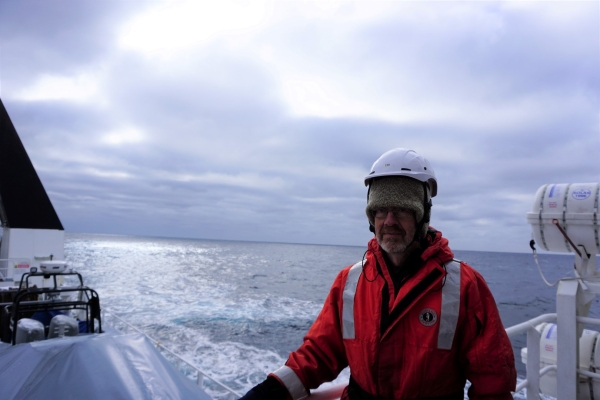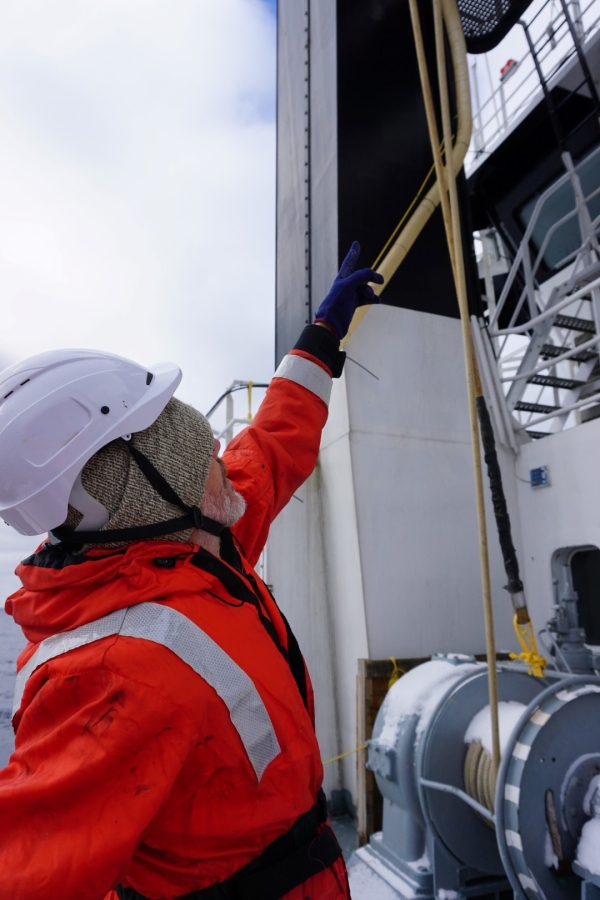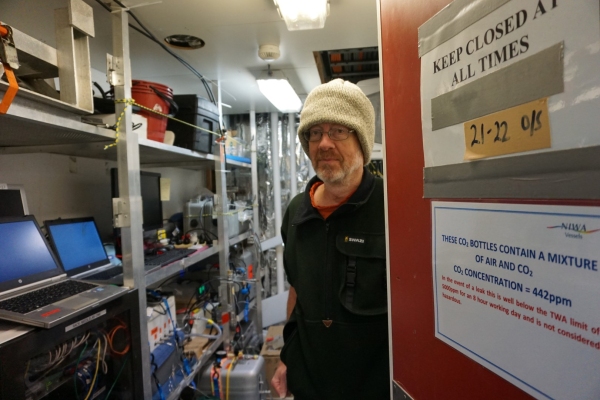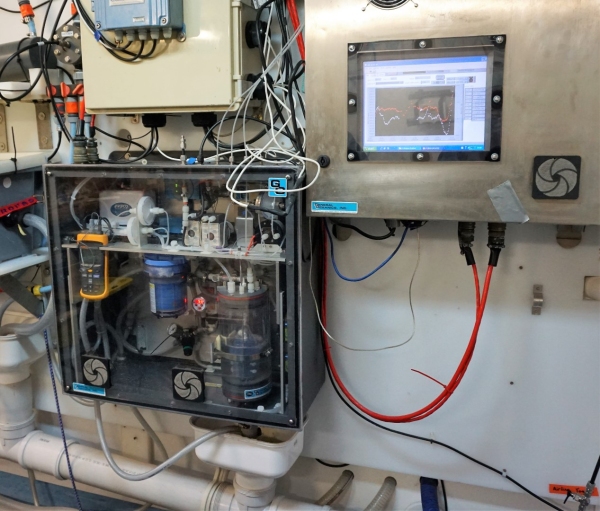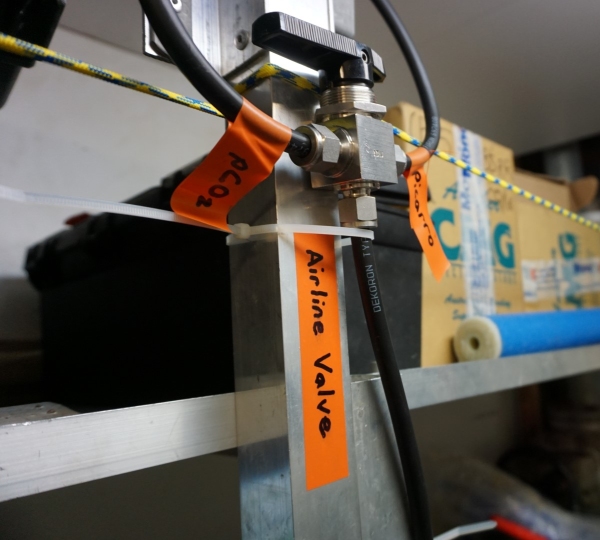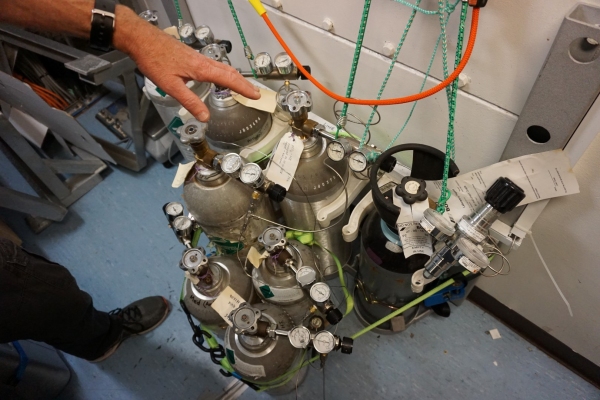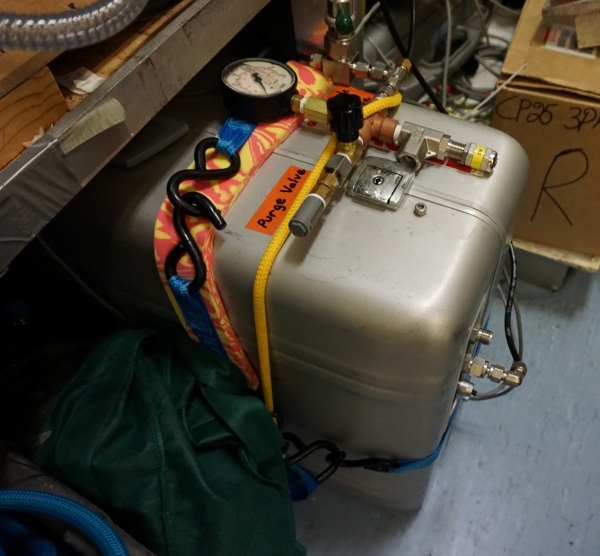21 February 2018
It’s a daily task for NIWA’s John McGregor from NIWA to make several trips down from the bridge to his lab on the Main Deck, one deck up from the bottom of the ship, to check on the instruments that measure atmospheric gases throughout our voyage.
The PICARRO instrument is a Carbon dioxide (CO2), Methane (CH4) and water vapour (H2O) analyser. It is constantly measuring CO2 , and CH4 in the air that is piped down from the Monkey Island at the very top of the ship. Water vapour is removed by drying before analysis, so if any water shows up in analyses, it is an indication of problems with the system. In addition, the instrument is automatically calibrated twice a day with gases of known concentration.
John needs to keep an eye on the wind direction to rule out false measurements from the ships exhaust. In addition, a flask sampler system allows John to take samples of Antarctic air for more detailed analysis back on shore after the voyage.
The air in Antarctica is very clean, as it is as far as we can get from any cities, traffic and other major sources of air pollution. Another clean air site closer to home is at Baring Head, near Wellington, and the measurements we take from down here will be compared with the measurements we take from air samples at Baring Head, in order to improve our understanding of CO2 in the atmosphere and its influence on climate.
Another system onboard measures dissolved carbon dioxide (pCO2) in the seawater coming through the ships Underway water supply, which gives us the other half of the picture of how much CO2 from the atmosphere is absorbed by the ocean.

